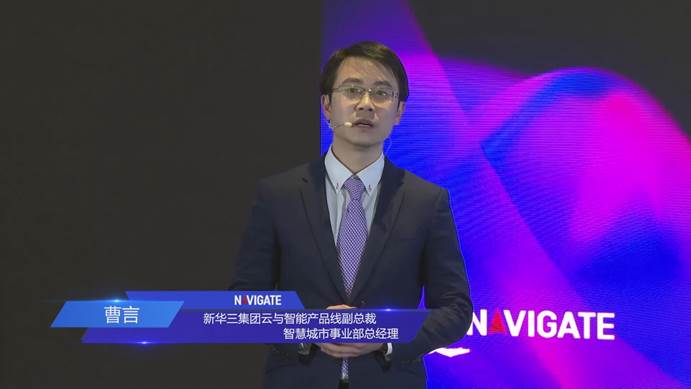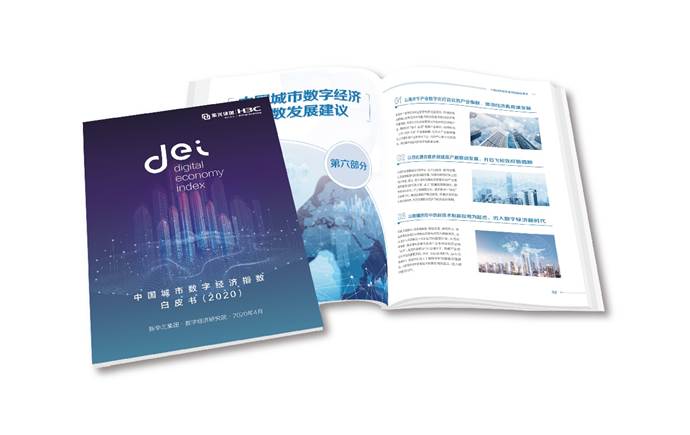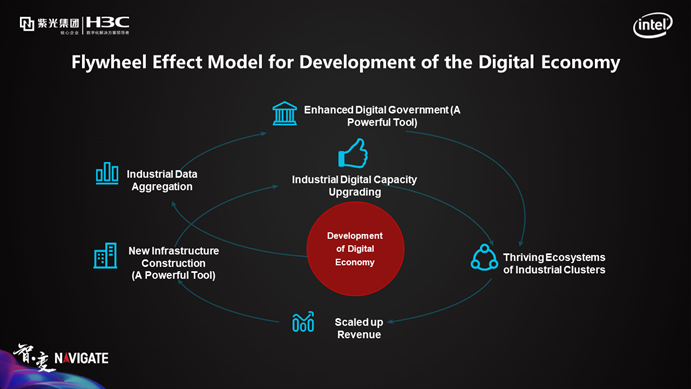H3C Releases Digital Economy Index 2020: Providing an Outlook on the ¥1 Trillion Market of New Infrastructure Construction
Where will the digital economy go in the future? On April 21, H3C released the Digital Economy Index 2020 (DEI 2020) at the New Smart City Session of NAVIGATE 2020. Cao Yan, General Manager of Smart City Solutions Division and Vice President of Cloud and Intelligence Product Line of H3C believed that DEI 2020 will explore the sustainable path of and provide reference for urban digital economy development in China.

Cao Yan, General Manager of Smart City Solutions Division and Vice President of Cloud and Intelligence Product Line of H3C
Building a Research and Evaluation System Highlighting Industrial Integration with a Broadening Scope
The DEI 2020 initiated by H3C, an annual research on smart city construction, is highly acclaimed by the industry and provides important reference for urban constructors and administrators. Based on an in-depth understanding of the top-level design, demand analysis, scheme planning, overall delivery and O&M improvement of smart city projects, H3C Digital Economy Research Institute promotes a more authoritative and professional research and evaluation system, with a broadening scope.
More specifically, DEI 2020 has included 113 urban study samples, compared with that of over 40 in DEI 2017. The research covers eight major city clusters and 50 county-level cities, with four key regions, namely the Beijing-Tianjin-Hebei region, the Yangtze River Delta, the Guangdong-Hong Kong-Macao Greater Bay Area and the Chengdu-Chongqing region. Together with 148 cities and 100 county-level areas (including counties, county-level cities and districts) incorporated into the study, a three-dimensional research system that involves “key regions — core cities — advantageous counties” has been established.

Digital Economy Index 2020
Exploring the Path of Urban Digital Economy to Drive High-quality Development
Against the backdrop of China’s economy transforming from high-speed development to high-quality development, the country’s urban digital economy shows a dominant trend of “counties as the basic units, cities driven by advantageous counties, regions radiated by core cities and the country powered by key regions”. Now digital economy has become the main driving force of industrial clusters development, technological breakthroughs and business application innovation at county levels.
Thanks to four years’ accumulative experience of digital economy evaluation, H3C has established a flywheel effect model for digital economy development. The model is marked by three major values, which are sorting out the core factors of digital economy development, identifying the promotion relationship among the factors and clarifying the two key points for digital economy development. It will hence provide theoretical support for the layout of urban digital economy.

Flywheel effect model for digital economy development
In addition, concerning China’s urban digital economy development, H3C Digital Economy Research Institute has also put forward many innovative observations and discoveries.
Finding I: The investment in new infrastructure construction will be pouring in the digital economy.
New infrastructure construction will spark off a new economic cycle. The investment in projects related to the construction of new infrastructure, the underlying facilities in the digital world, including 5G, Big Data, AI and Industrial Internet will directly fuel the growth of digital economy, and promote the fast development of the upstream and downstream in the industry chains.
Finding II: Importance of data awareness capability and the factor value have been rapidly highlighted.
According to the calculations by H3C Digital Economy Research Institute, more than 90% of cities have established Big Data bureaus and more than 80% have set up unified government cloud. As such, emerging technologies are dynamically applied in urban management, and it’s of crucial importance to enhance data awareness capability.
Finding III: Regional digital economy presents a new pattern of “4 + N”.
As a critical driver supporting China’s high-quality economic development, regional economy is the focal point for moving forward with different policies and reforms. At present, China’s regional digital economy has seen a new pattern of “4+N”, which consists of four key regions (the Guangdong-Hong Kong-Macao Greater Bay Area, the Beijing-Tianjin-Hebei region, the Yangtze River Delta and the Chengdu-Chongqing region), and a dozen of digital hotspots.
Finding IV: China’s urban digital economy ushers in the climax of development.
According to the evaluations on China’s digital economy from 2017 to 2020, the country’s urban digital economy shows a prominent trend of moving forward and concentration. Compared with the previous year, digital economy in first and second-tier cities has seen strong momentum, with an increase of 31.8% in the number of new first-tier cities and 32.7% in the number of second-tier cities.
Finding V: Coping and response ability of urban digital economy has been fully confirmed in the COVID-19 control and prevention.
There is a positive correlation between a more developed digital economy in a city and the city’s performance in the COVID-19 prevention and control and aftermath disposal. Research shows that the impact of the epidemic on the digital economy is mainly reflected in four aspects: data infrastructure, urban services, urban governance and industrial integration. In the post-epidemic era, the integration of real economy and digital economy will be accelerated.
While focusing on industrial digitalization and new infrastructure construction, DEI 2020 has also added interpretation of county-level economy and timely supplemented research on key issues such as the impact of the epidemic on the digital economy, which is of great value to provide reference for exploring the high-quality development path of China’s economy.
In the future, H3C Digital Economy Research Institute will continue to keep record of the digital transformation of cities with data being the carrier, provide professional services and customized solutions to all parties, support government to build a robust digital economy, and facilitate a new cycle of flywheel effect for digital economy development.
For more details about the Digital Economy Index 2020, please visit: http://deindex.h3c.com/


